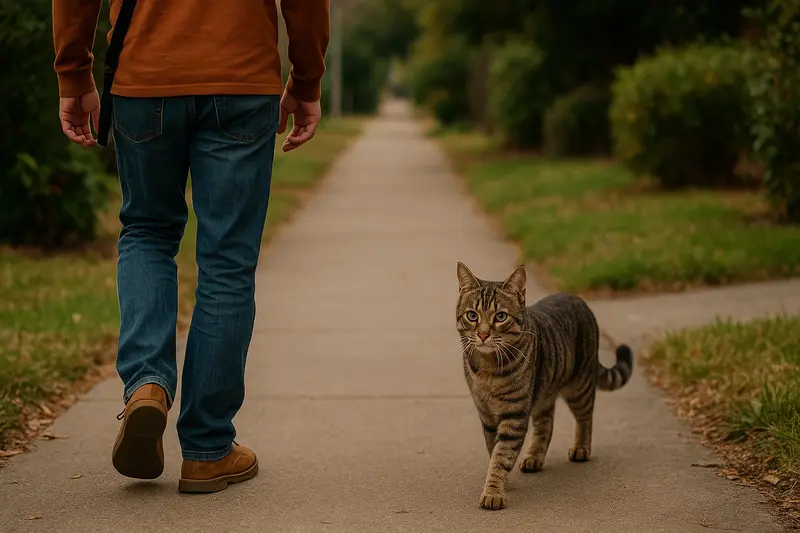Have you ever walked down the street and suddenly noticed a random cat trailing behind you? It doesn’t hiss or run—it stays close, meows, and sometimes even follows you block after block. Many people describe this as a strange yet heartwarming encounter. But what makes a cat follow someone it doesn't know? Is it hungry, curious, or does it sense something in you?
As a pet behavior expert, this article explores the most likely reasons why unfamiliar cats follow people, what it might mean, and how to handle the situation respectfully and safely.

Cats are extremely curious animals. Outdoor or semi-feral cats are especially reactive to new sights, smells, and movements. If you walk by and catch its interest—by the way you move, smell, or even dress—it may decide to investigate further.
One of the most common reasons is food.
If you're carrying a grocery bag or eating something, the cat may assume you have something for it.
Some cats have learned that humans often provide food, so they follow people out of habit or hope.
Many stray cats were once pets. If a cat is lost or abandoned, it might approach people seeking comfort or companionship, especially if you appear gentle and non-threatening.
Unneutered cats in heat—both male and female—become more active and vocal. They may follow people or other animals in search of a mate.
In some cases, sick or injured cats seek help by approaching humans, especially if they’ve had positive past experiences with people.
Cats are hypersensitive to body language. People who move calmly, speak softly, and avoid direct eye contact are more likely to gain a cat’s trust.
If you have pets at home, the scent of other cats or animals on your clothes may make you seem familiar and approachable.
Cats pick up on emotional vibes. Relaxed, balanced individuals tend to draw in cats more easily.
Even things like soft-colored clothing, minimal perfume, or quiet footsteps can make a difference in how a cat reacts to you.
Check for a collar, tag, or signs of being a pet
Assess its appearance: clean coat? underweight? signs of injury?
Observe behavior: friendly or fearful? vocal or quiet?
Even if a cat seems friendly, avoid grabbing or picking it up. Let it choose the level of interaction.
If the cat follows persistently, try offering a small amount of cat food or water. A healthy appetite often indicates decent overall health.
If it appears lost, take a photo and post in local lost pet forums or community groups
If it's clearly injured or sick, contact a local rescue or animal control for help
Refrain from feeding if you don’t want continued visits
Report the situation to local TNR (Trap-Neuter-Return) or rescue organizations for tracking
Check for microchips, screen for infectious diseases, parasites, and discuss vaccinations and spaying/neutering.
If you already have pets, keep the new cat separated for 7–14 days to prevent potential disease transmission.
Don’t rush the bonding process. Use food, toys, and gentle interactions to gain trust over time.
Evaluate your financial, emotional, and time resources. Adoption should be a long-term, well-considered decision.
Cats rarely follow strangers without reason. If one chooses to follow you, it may be expressing curiosity—or seeking help, safety, or even a new home.
Whether or not you’re ready to adopt, treat the encounter with compassion. A single act of kindness could change a cat’s life forever—or yours.
animal tags:
We created this article in conjunction with AI technology, then made sure it was fact-checked and edited by a Animals Top editor.